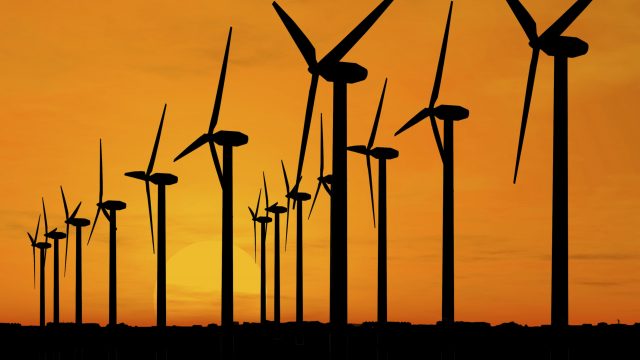Shauna Theel: Wind Becoming A Valuable Part Of North Dakota’s Energy Boom

The renewable energy Production Tax Credit (PTC) has helped spur private investment in projects that help American workers make more of our energy right here at home, and North Dakota has seen the benefits.
For instance, when the leading wind turbine manufacturer LM Wind Power announced it was hiring hundreds of workers in the state in 2013, it cited the extension of the tax credit. The wind energy industry has supported 73,000 jobs on average over the last five years. These jobs are typically well-paying manufacturing, construction, and operations jobs.
These American workers make a product that benefits everyone who uses electricity, helping hold down electric rates and avoiding pollution while giving the state another export.
Over 15 percent of North Dakota’s electricity is now powered by wind, which has become very affordable in this wind-rich state. By diversifying its power mix, North Dakota is protecting consumers from fuel price spikes, since wind is stably-priced. This is similar to how a fixed-rate mortgage protects homeowners from fluctuations in interest rates.
When wind avoids the need for grid operators to turn to more expensive sources of energy during cold snaps or heat waves, it reduces the cost of all electricity, not just that provided by wind.
With the help of the PTC, companies have made huge progress, helping drive down the cost of wind power by 58 percent over the last five years, according to the accounting firm Lazard. For example, LM Wind Power has innovated by creating better blades (generally made of sturdy fiberglass) that capture more wind, while reducing the environmental impact of products, homes, and factories that run on wind energy.
Wind energy is one of the biggest, fastest, and cheapest ways to reduce carbon pollution that scientists say is driving climate change. Study after study has shown that wind energy has much lower emissions of all kinds, and a new wind farm repays its carbon footprint within the first six to eight months. The wind power already installed in North Dakota avoids as much carbon pollution as taking 600,000 cars off the road. And it gives the state another valuable product it can export, just like other forms of energy.
This makes adding more wind energy a win-win for the economy as well as the environment in North Dakota. But further expansion of the industry, following 100 years of incentives and infrastructure built to make other forms of energy, relies on one critical policy – and that was just given only a three-week extension by Congress, in its rush to get out of town for the holidays.
That is no way to run an industry, or a country.
The next time Congress takes up energy policy, it should provide some stability to keep this American success story going, in North Dakota and across all of America’s wind-rich states.




